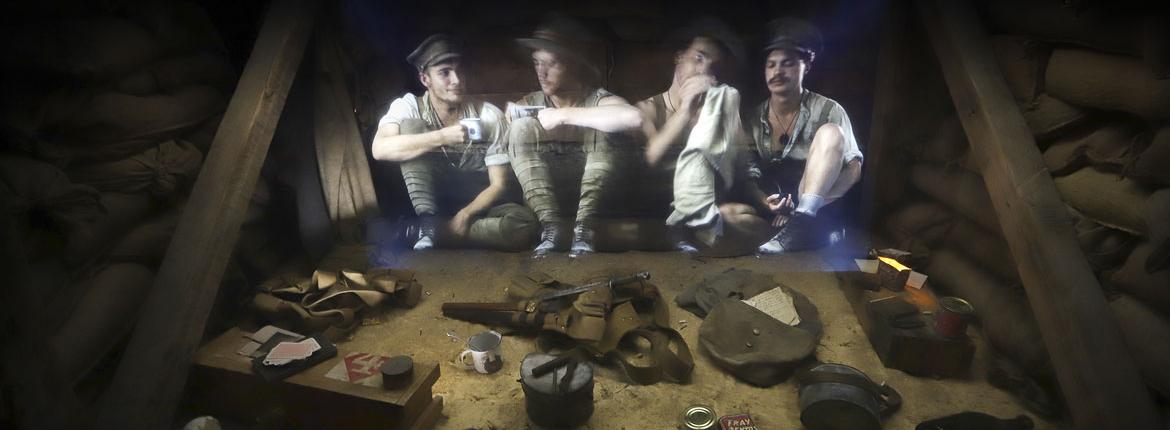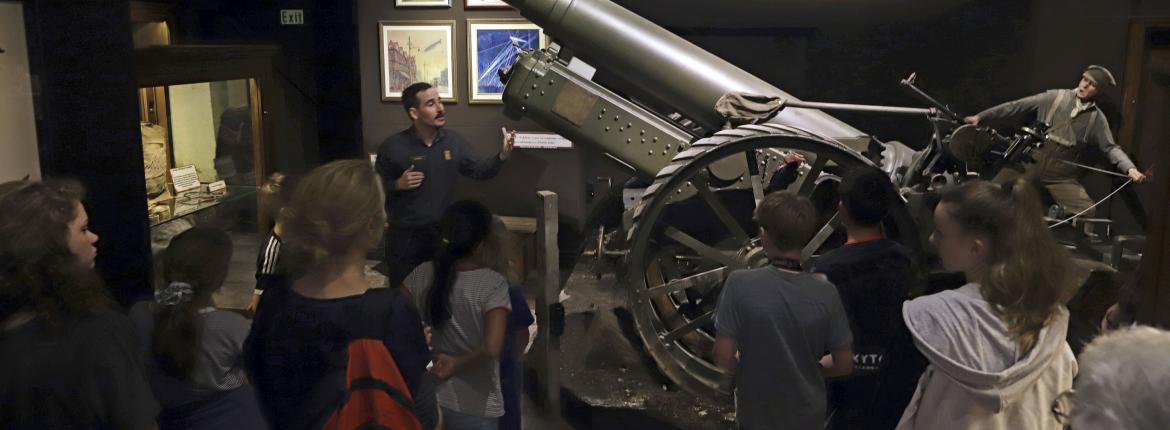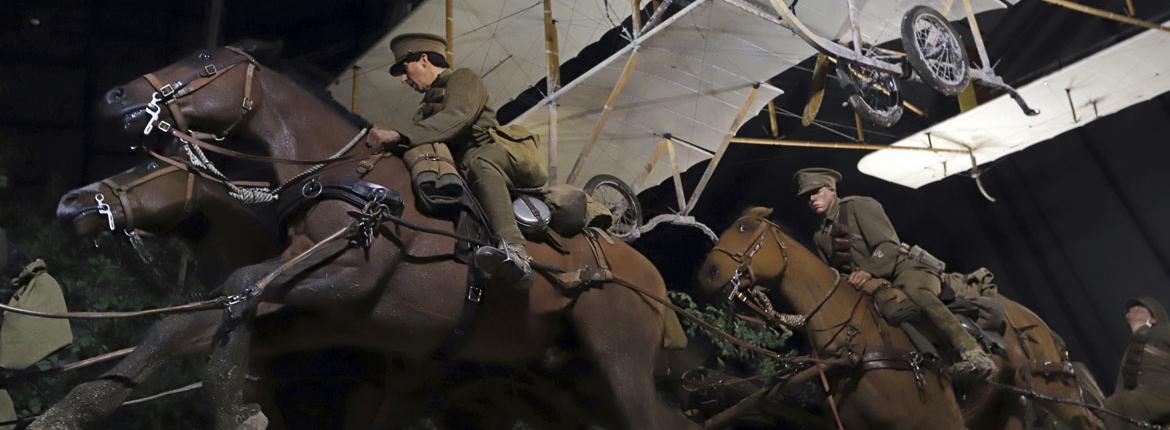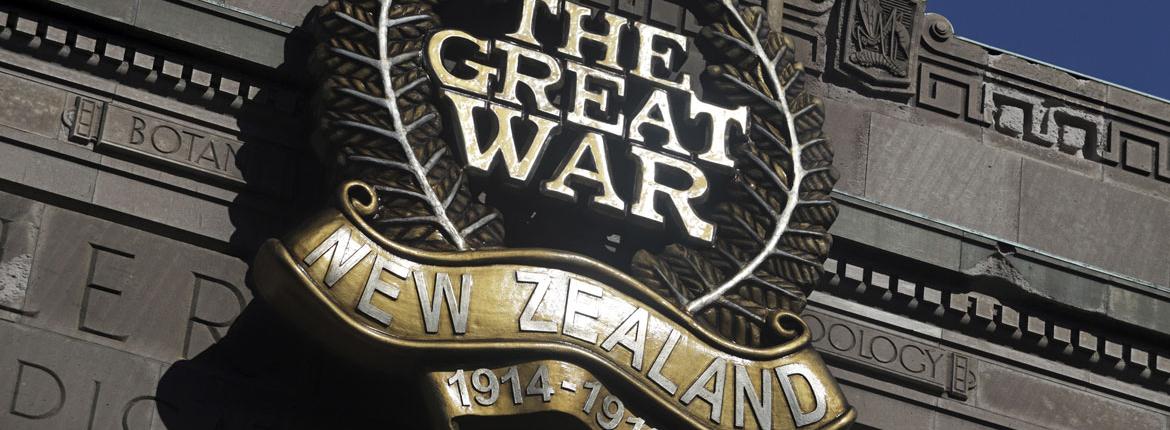The enemy was close. Explosions rocked the floor beneath us and resonated through my chest. Transfixed, we huddled in the trench high on the cliffs of Gallipoli ‒ the cramped hole that the Anzac soldiers around us call home.
‘Hell on Earth’, was the nickname given to this warren of barely shoulder-width tunnels connecting dugouts, ditches and terraces scoured into the scorched hillside overlooking Anzac Cove. In places, the
Turks were just a few metres away, corpses scattered, lice rife, and yet these soldiers alongside us fought valiantly on.
We were at Quinn’s Post, a key position in Gallipoli on the Anzac lines, to experience a little of what life was like for those brave troops who endured its frightful conditions. Named after Major Hugh Quinn, an Australian officer who died leading a counter-attack against Ottoman forces in 1915, it’s said that on hearing the bombs up at Quinn’s, men would look at the place ‘as a man looks at a haunted house.’
We could empathise now that we were in the trenches – the noise, smells and relentless action of this battle-torn area an assault on the senses.
Wellington’s new Quinn’s Post Trench Experience is the brainchild of Sir Peter Jackson. Thanks to his imagination and the creative geniuses of WingNut Films, the multi-million dollar facility allows a taste of what life was like for our Anzacs. Housed alongside the Great War Exhibition in the city’s Dominion Museum building near Pukeahu National War Memorial Park, the scene is so authentic it’s worthy of any blockbuster movie.
To give us some context, our 30-minute foray began with a short film detailing the history of the region in which we were about to be immersed. There were three generations of us ‒ including 12-year-old Charlie, Jasmine, 14, and Grandma visiting from England. On signal we began moving through the darkness, stooping within the confines of the tunnels and feeling our way along the sandbags.
We observed the soldiers around us continue with their activities, their images created by a special technique called Pepper’s Ghost. We watched as one picked lice from his uniform. Nearby, his comrades fashioned bombs using old jam tins – resourceful Kiwis to the last. And they addressed us as if we were all in this together.
So real were the images of the personnel, I stood slightly to attention at the appearance of Commanding Officer Lieutenant-Colonel Malone.
“What we inherited here at Quinn’s was a dilapidated, disorganised, filthy hell,” he told us authoritatively. “Good on the Wellington Battalion. My officers and men have all turned up trumps.
“No regiment in the world could do better than my Wellingtons. New Zealand can be justly proud of her sons.”
It would be easy to forget we weren’t actually high on the hills of Gallipoli, such pains have been taken to ensure authenticity in this experience, which took over a year to create. Even the bullet holes are those of genuine WWI weaponry. As with the equally impressive Great War Exhibition alongside – through which we’d taken a highly informative guided tour beforehand – many of the items included are from Sir Peter’s personal collection of WWI artefacts, alongside some accurate reproductions.
The ferocity and intensity of the fighting here at Quinn’s Post continued for many months, with bombing, attacks and aggressive tunneling from both sides earning the position a fearsome reputation. Its casualties added to the tragic 44,150 Allied deaths during the Gallipoli campaign. Of those, 2,779 were New Zealanders.
“We can hear the sounds of Jacko digging towards us,” an Ammo Sergeant told us, continuing diligently on with his work despite the continual explosions.
He encouraged us to take a seat on the wooden munitions boxes scattered around, chatting about life in the trenches. As he worked away with the explosives’ components, a cigarette dangled from his lips – a sign of how numb the soldiers had grown to the fragility of life.
“They've stuck us New Zealanders here ‘cos we got a lot of blokes who were miners back home – Hokitika, Waihi, Westport,” he told us. “They can drive a tunnel forward fifteen feet in a single shift.”
He warned us there were dead Turks in the area above our heads, cautioning us to watch out for the drips as a result. “Be a good idea not to bump the boxes you’re sitting on too,” he added casually.
At the frontline more explosions rocked the walls, and beneath us, the gritty floor shook. “Go, go, go!” yelled the officer overseeing our safe delivery back to the real world. We obeyed, scurrying, stooping through the tunnel. It was too dark to see the reaction on the children’s faces but they certainly moved fast.
As we emerged back into daylight we were slightly stunned.
“What did you think?” asked our guide.
“It was right on the edge of being freaky but well-measured enough to be really intriguing,” replied Charlie.
Returning to the comforts of modern-day life, we had a new appreciation for the efforts and struggles of the soldiers involved in this desperate battle.
Visitor information
The Great War Exhibition is in the Dominion Museum Building, in Pukeahu National War Memorial Park (between Taranaki and Tory Streets), Wellington.
Quinn's Post Trench Experience – $20 for adults and $10 for children, or $50 for a family ticket (two adults & two children).
Tickets do not include entrance to the Great War Exhibition, but a guided tour beforehand is highly recommended by the writer. Combo tickets are available. See The Great War Exhibition for more.
For more on Wellington, and to book accomodation, see AA Traveller.
Reported by Fiona Terry for our AA Directions Winter 2018 issue







